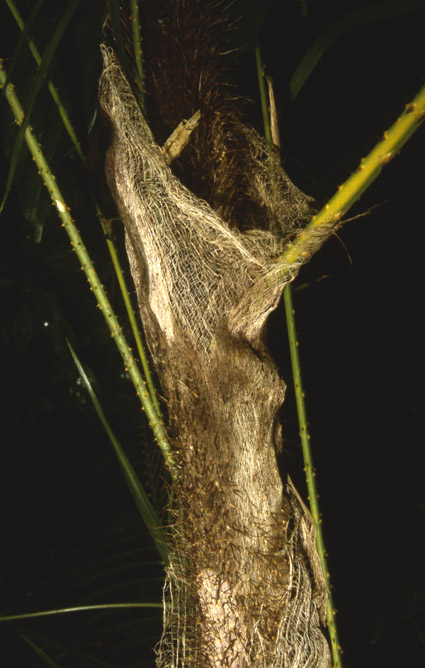- Acanthophoenix
- Acrocomia
- Actinokentia
- Actinorhytis
- Adonidia
- Aiphanes
- Allagoptera
- Ammandra
- Aphandra
- Archontophoenix
- Areca
- Arenga
- Asterogyne
- Astrocaryum
- Attalea
- Bactris
- Balaka
- Barcella
- Basselinia
- Beccariophoenix
- Bismarckia
- Borassodendron
- Borassus
- Brassiophoenix
- Burretiokentia
- Butia
- Calyptrocalyx
- Calyptrogyne
- Calyptronoma
- Carpentaria
- Carpoxylon
- Caryota
- Ceratolobus
- Ceroxylon
- Chamaedorea
- Chamaerops
- Chambeyronia
- Chelyocarpus
- Chuniophoenix
- Clinosperma
- Coccothrinax
- Cocos
- Corypha
- Cryosophila
- Cyphokentia
- Cyphophoenix
- Cyphosperma
- Daemonorops
- Deckenia
- Desmoncus
- Dictyocaryum
- Drymophloeus
- Dypsis
- Elaeis
- Eleiodoxa
- Eremospatha
- Eugeissona
- Euterpe
- Gaussia
- Geonoma
- Guihaia
- Hedyscepe
- Hemithrinax
- Howea
- Hyophorbe
- Hyospathe
- Hyphaene
- Iriartea
- Iriartella
- Itaya
- Jailoloa
- Johannesteijsmannia
- Juania
- Jubaea
- Jubaeopsis
- Kentiopsis
- Kerriodoxa
- Korthalsia
- Laccospadix
- Laccosperma
- Lanonia
- Latania
- Lemurophoenix
- Leopoldinia
- Lepidocaryum
- Lepidorrhachis
- Leucothrinax
- Licuala
- Linospadix
- Livistona
- Lodoicea
- Lytocaryum
- Manicaria
- Manjekia
- Marojejya
- Masoala
- Mauritia
- Mauritiella
- Maxburretia
- Medemia
- Metroxylon
- Myrialepis
- Nannorrhops
- Nenga
- Neonicholsonia
- Neoveitchia
- Nephrosperma
- Normanbya
- Nypa
- Oenocarpus
- Oncocalamus
- Oncosperma
- Orania
- Oraniopsis
- Parajubaea
- Pelagodoxa
- Phoenicophorium
- Phoenix
- Pholidocarpus
- Pholidostachys
- Physokentia
- Phytelephas
- Pigafetta
- Pinanga
- Plectocomia
- Plectocomiopsis
- Podococcus
- Pogonotium
- Ponapea
- Prestoea
- Pseudophoenix
- Ptychococcus
- Ptychosperma
- Raphia
- Ravenea
- Reinhardtia
- Retispatha
- Rhapidophyllum
- Rhapis
- Rhopalostylis
- Roscheria
- Roystonea
- Sabal
- Sabinaria
- Salacca
- Saribus
- Satakentia
- Satranala
- Schippia
- Sclerosperma
- Socratea
- Solfia
- Sommieria
- Syagrus
- Synechanthus
- Tahina
- Tectiphiala
- Thrinax
- Trachycarpus
- Trithrinax
- Veitchia
- Verschaffeltia
- Voanioala
- Wallaceodoxa
- Wallichia
- Welfia
- Wendlandiella
- Wettinia
- Wodyetia
- Zombia
- x Jubautia splendens
- ?? Acoelorrhaphe
- ?? Bentinckia
- ?? Brahea
- ?? Clinostigma
- ?? Colpothrinax
- ?? Copernicia
- ?? Cyrtostachys
- ?? Dictyosperma
- ?? Dransfieldia
- ?? Heterospathe
- ?? Hydriastele
- ?? Iguanura
- ?? Incertae sedis & excluded names
- ?? Loxococcus
- ?? Micronoma
- ?? Paripon
- ?? Pritchardia
- ?? Rhopaloblaste
- ?? Serenoa
- ?? Washingtonia

Discussion
- Calamus reticulatus is a very striking thicket-forming rattan of river-banks. It appears to be an obligate rheophyte, only inhabiting open, sunny areas at river margins where it can grow extremely vigorously, forming vast masses of stem and foliage, which blanket other vegetation. Calamus reticulatus is closely related to C. vestitus, sharing very similar leaf sheath spine and seed morphology. The ocrea, however, is strikingly different. Though tubular like that of C. vestitus, the ocrea of C. reticulatus is composed of a reticulum of fibres which extends well beyond its origin and is stretched around the petiole and flagellum of the leaf sheath above to form a funnel. The ocrea is also armed with numerous needle-like spines. An astonishingly similar ocrea-type can be found in the distantly related rattan genus Korthalsia, K. jalaJ. Dransf. from Borneo. In addition to the ocrea morphology, C. reticulatus can be distinguished from C. vestitus by the more numerous leaflets (56 - 64 each side of rachis in C. reticulatus, 20 - 47 in C. vestitus), and by the longer and more numerous bristles on both surfaces of the leaflets of C. reticulatus. The rheophytic habit of C. reticulatus is also striking; C. vestitus shows no preference for river-banks. Moreover, the known distribution of C. reticulatus is disjunct from that of C. vestitus, being restricted to south-west Papua New Guinea (Map 1). (Baker, W.J. & Dransfield, J. 2002: Calamus longipinna (Arecaceae: Calamoideae) and its relatives in New Guinea)A
Biology And Ecology
- Restricted to river margins, in sunlit, open vegetation, up to 450 m. (Baker, W.J. & Dransfield, J. 2002: Calamus longipinna (Arecaceae: Calamoideae) and its relatives in New Guinea)A
Conservation
- Not threatened. Although C. reticulatus is known from a moderately restricted area of New Guinea, it can occur in very great abundance and persist in secondary riverine vegetation. (Baker, W.J. & Dransfield, J. 2002: Calamus longipinna (Arecaceae: Calamoideae) and its relatives in New Guinea)A
Common Name
- Unknown. (Baker, W.J. & Dransfield, J. 2002: Calamus longipinna (Arecaceae: Calamoideae) and its relatives in New Guinea)A
Uses
- Unknown. (Baker, W.J. & Dransfield, J. 2002: Calamus longipinna (Arecaceae: Calamoideae) and its relatives in New Guinea)A
Description
- South-west Papua New Guinea (Western and Southern Highlands Provinces, sight records by the first author on the Kikori River in Gulf Province). (Baker, W.J. & Dransfield, J. 2002: Calamus longipinna (Arecaceae: Calamoideae) and its relatives in New Guinea)A
Materials Examined
- PAPUA NEW GUINEA. Southern Highlands Province: Mubi R., Sisibu, across river from Kantobo, Feb. 1996, Baker et al. 644 (K!, LAE!); Mubi R., Mabogo Island, near Gobe Village, Feb. 1996, Baker et al. 650 (K!, LAE!). Western Province: Fly R., 528 mile camp, May 1936, Brass 6811 (A, BM!, BO, BRI); Kiunga, above junction of Fly and Elevala Rs., Sept. 1972, Streiman & Lelean NGF 18410 (BH, K!, L!, LAE). (Baker, W.J. & Dransfield, J. 2002: Calamus longipinna (Arecaceae: Calamoideae) and its relatives in New Guinea)A
- Log in to post comments

